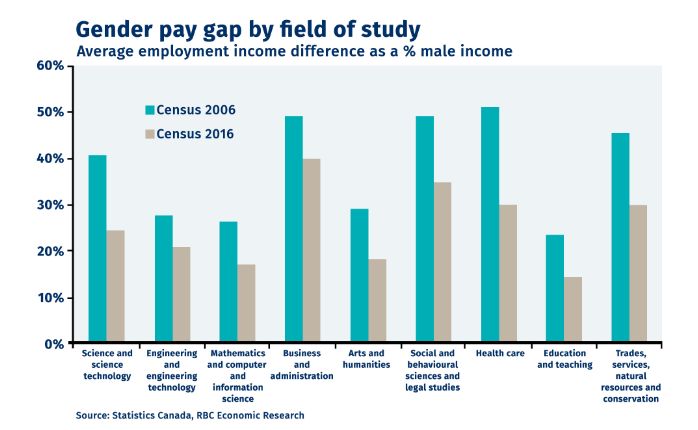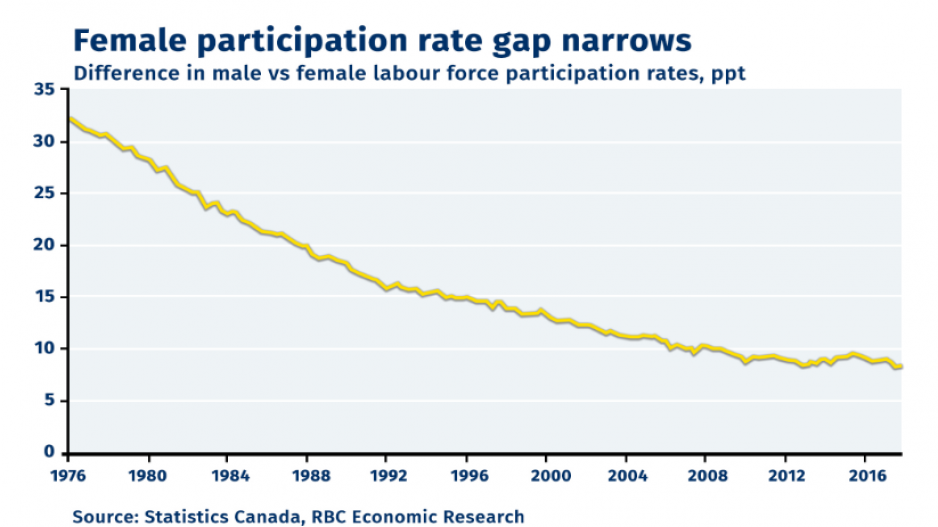In a report released March 8 – International Women’s Day – RBC shared some good news: the participation gap between men and women in the Canadian labour force hit an all-time low by the end of 2017.
As of the end of last year, the gap was 9%. This is a dramatic drop since 1980, when it was 30%. There is also potential for this gap to narrow further in the short-term; over the past three years, 55% of the 801,000 jobs created across Canada were filled by women.
These statistics put Canada to the top of the list of OECD countries, beating out the U.S., Germany and the U.K. in terms of a narrowing gap. The report cites factors such as rising educational levels, widening career options, necessity and government policy as reasons for increasing female participation.
As well, the study found that older women in Canada are staying in the labour force for longer. This could be attributed to more of then reaching higher managerial roles at work.
Minding the gap could be good for business. RBC estimates that if the labour participation gap ever disappears, the economy could grow by around 4%, or $102 billion.
And now, the not-so-great news. Canada does poorly, relatively, when it comes to the wage gap. In 2016, the wage gap in this country was just over 18%. This means that for every dollar earned by men, women earned, on average, 82 cents. The gap widens or narrows depending on field of work; it is narrower in service sectors and higher in construction, for example. By comparison, the OECD average wage gap was 14.1%.

Image: RBC report, International Women’s Day and Canadian Women: Mind the Gap(s)
The study found that while women dominate all study disciplines in post-secondary education – including sciences – they still tend to be underrepresented in engineering, math and skilled trades. This could be due to expected difficulties in finding employment in their chosen fields. Among women 25-34 with STEM degrees, they were half as likely as their male counterparts to be working in jobs related to their educations (30% compared with 60%, respectively.
@EmmaHampelBIV




